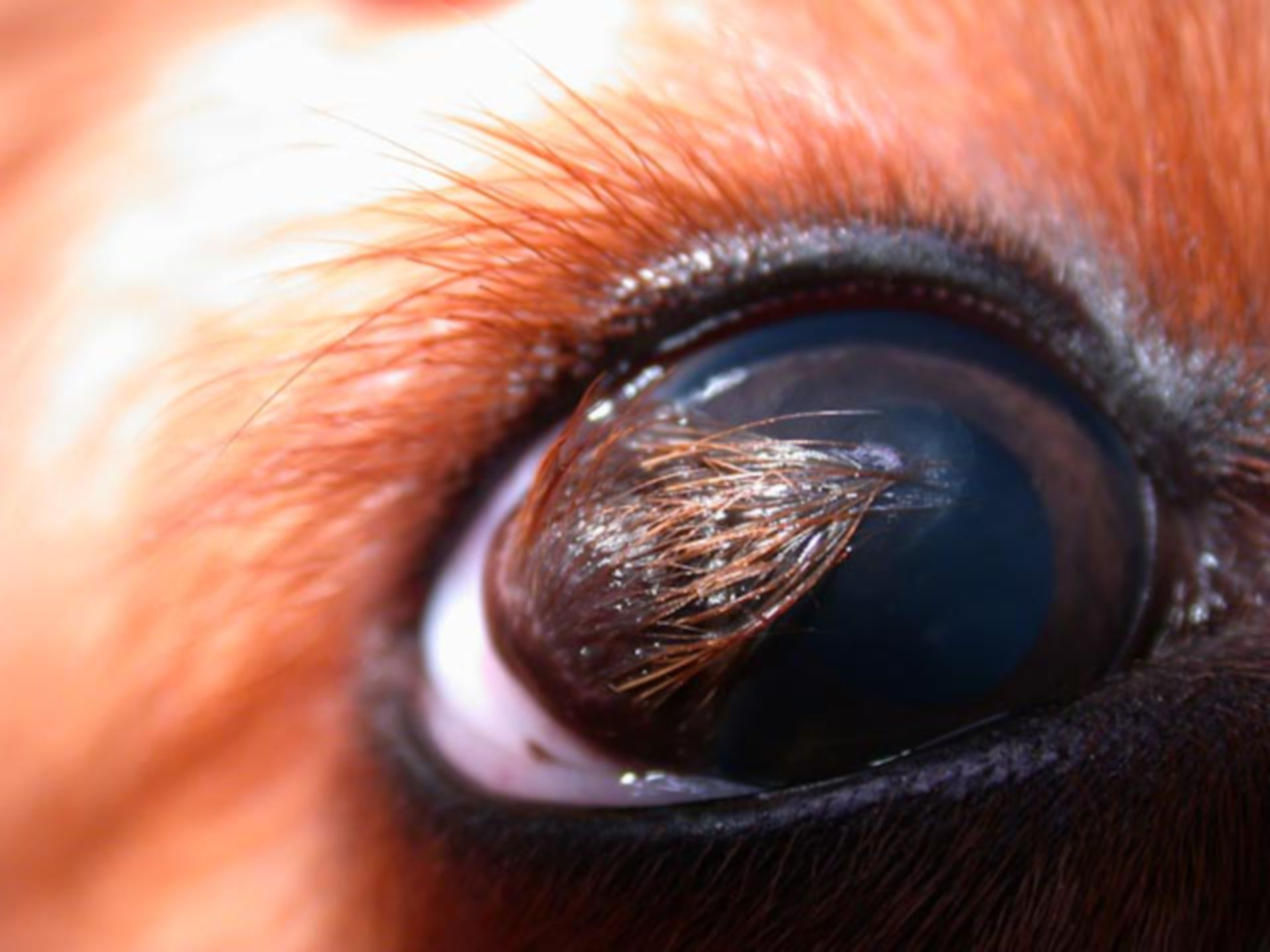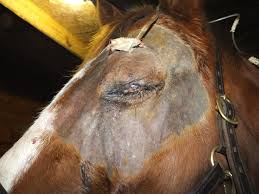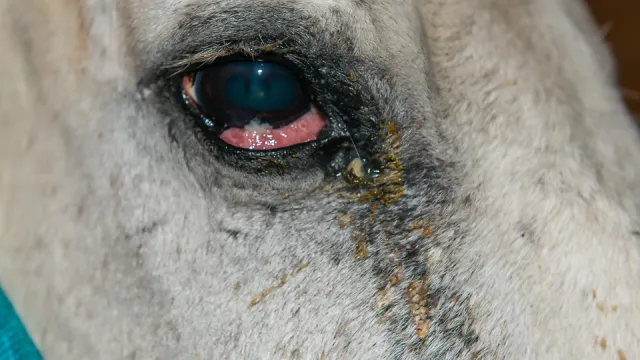2.16 Diseases of the Eyelids and Conjunctiva
1/47
There's no tags or description
Looks like no tags are added yet.
Name | Mastery | Learn | Test | Matching | Spaced |
|---|
No study sessions yet.
48 Terms
What are congenital disorders of the eyelids?
Entropion
Ankyloplephron
Dermoid
Agenesis
Coloboma
Temporary repair with vertical mattress suture, subconjunctival injections, or surgery if necessary in adulthood (blepharoplasty).
What is a dermoid?
Focal congenital mass of displaced skin and tissue, sometimes including hair, that may need surgical removal if irritating.

What is coloboma?
Full thickness absence of portions of the normal eyelid, requiring reconstructive blepharoplasty if ocular disease is present.

What are acquired eyelid disorders?
Trauma/lacerations
Ectropion
Blepharitis
Neoplasia
Distichiasis
Trichiasis
Prominence of the nictating membrane
How is trauma to the eyelids treated?
Conservative: topical compress, topical ATB, systemic NSAIDS.
Surgical: temporary tarsorrhaphy, re-apposition of eyelid margin. NEVER RESECT/ CUT OFF eyelid laceration!

What is the treatment for ectropion?
V and Y blepharoplasty.
What are common causes of blepharitis?
Infectious causes include bacteria (Moraxella equi) and parasites (oncocerciasis, habronemiasis);
Non-infectious causes include dermatological conditions, photosensitization, and neoplasia.
What are the clinical signs of blepharitis?
Blepharospasm (blinking), hyperaemia, swelling, exudation, alopecia, pruritus, epiphora (tears).
How is blepharitis diagnosed?
History, clinical signs.
How is blepharitis treated?
Depends on aetiology and condition.
What are the aetiology of neoplasia of the eyelids?
Depends on age, breed, lack of ocular pigmentation, genetics, UV radiation, infectious agents and chronic irritants.
How is eyelid neoplasia diagnosed?
Histopathological examination, biopsy.
How are eyelid neoplasia treated?
BCG (Bacillus Calmette Guerin) – used to dissolve sarcoid (injection).
Gamma-radiation (best). Resection could destroy eyelid margin.
What is distichiasis?
A double set of eyelashes: extra hair or cilia grow from the meibomian glands.
What is the treatment for distichiasis?
Surgical electrolysis.
Altered globe position or size, inflammation, neoplasia, tetanus, Horner's syndrome, prolapse of the orbital fat pad, or conjunctival amyloidosis.
What is the diagnosis of prominent nictating membranes?
Clinical signs, biopsy, cytology.

What is the treatment of prominent nictating membranes?
Depends on the underlying cause. Surgical or antitoxin.
Irritants (environment, allergic, chemical).
Foreign bodies.
Infectious (Moraxella equi).
Parasitic: Thelazia, Habronema musca, Onchocerca cervicalis.
What are the clinical signs of conjunctivitis?
Swelling, oedema, epiphora, discharge, and hyperaemia.
How is conjunctivitis diagnosed?
Physical exam, scraping and culture, Schirmer tear test, occasionally biopsy.
What organ, other than lacrimal glands, is related to overproduction of tears?
Nasolacrimal duct.
Where is an eye catheter inserted?
Through the eyelid (usually medial ⅓ of lower [avoids meibomian glands], but can use middle of upper with the tip resting in the conjunctival sac, secured with sutures.